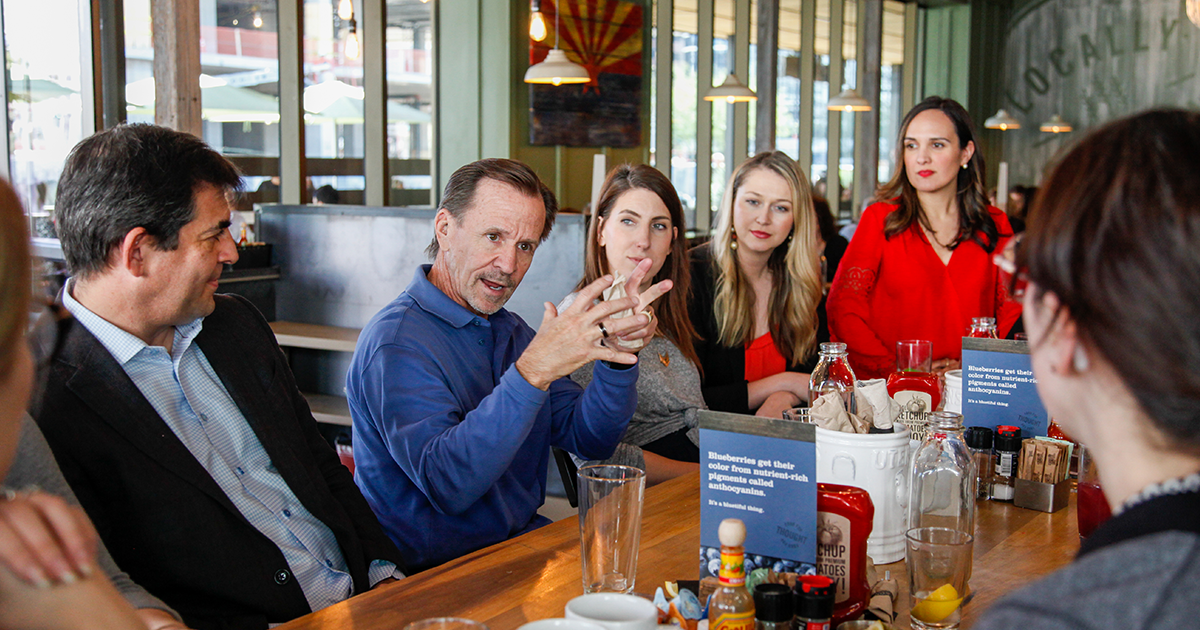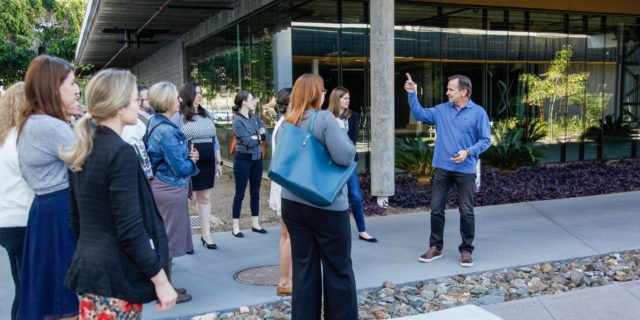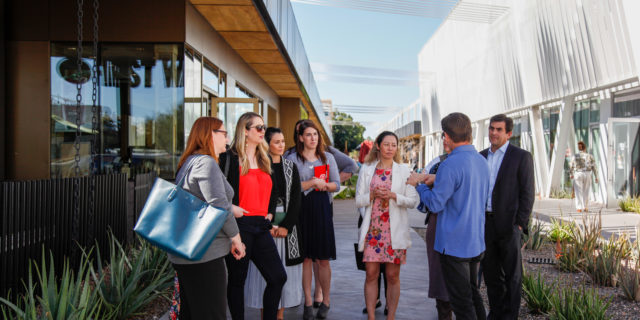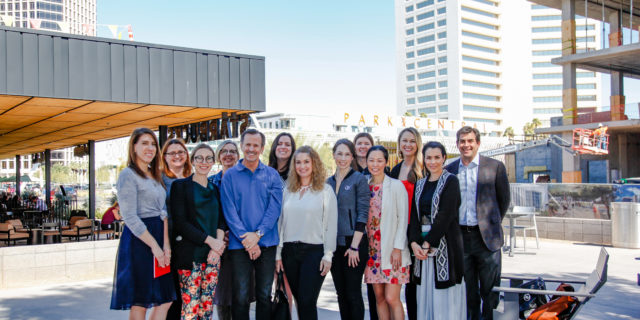

Fireside Chat: Entrepreneurial insights that drive staying power from the Phoenix real estate market
Published: 03/02/2020
Staying power has become an inescapable issue in today’s economy as the speed of technological growth continues to increase. Maintaining viability is a challenge that businesses must regularly fight if they are to remain at the top of their market. According to McKinsey, in 2000, the average age of the top 10 companies on the S&P 500 was 85 years old. However, the projected average age of the top 10 in 2027 will only be 12 years old. What causes industry leaders to fall off our radar after years of success? McKinsey attributes the change to the antiquated structure of companies and the speed of change in today’s market. New companies are innovating faster and impacting the market at a record pace.
The subject of staying power was the center of our conversation with Steve Betts, president of Betts Real Estate Advisors, about the past, present and future of Phoenix as we continued our fireside chat series. When it comes to business in Greater Phoenix, Betts is an expert. He serves on boards at Greater Phoenix Economic Council, First Place, and the Arizona Town Hall. He was also an economic adviser to former Arizona Governor Jan Brewer and currently to Arizona Governor Doug Ducey. The variability of the Phoenix real estate market has taught him how to develop and grow his real estate projects so they remain viable in the future.
We were able to tour the work that Betts and his partners have done to revive Park Central with a nod towards 1957, when the original Park Central Mall opened with mid-century-modern architecture and a focus on the future to support the growth of Phoenix’s midtown urban core. Betts’ history of building the future of Greater Phoenix has given him wisdom that only comes with his level of experience. Here are four ways that every entrepreneur and business owner can increase their staying power:
Future-proof through expansion
A future-proof company is a company that is always looking for new ways to increase market share by entering new segments of the market or introducing products that solve new problems. Each time a company adds a new solution or market segment it adds another leg to its platform. Eventually, when a business is diversified enough, it can lose entire “legs” of revenue without destabilizing the entire brand.
Betts described how Greater Phoenix has changed from a construction-heavy ecosystem to a diversified marketplace since the great recession. He described how Greater Phoenix’s economy fell into a deep rabbit hole and the lengthy recovery time. This time spent gave Greater Phoenix the opportunity to diversify its economy. Instead of being driven by population growth, which would ebb and flow with every change in the economy, the region is now full of industries that require a wide-ranging skilled workforce. Today, the Great Phoenix economy is driven by innovation, biotechnology and life sciences, precision manufacturing, financial services, technology and construction, to name a few. This gives Greater Phoenix more legs to stand on in a crisis like a recession.
Betts pointed out that the same must happen for every business and entrepreneur. If you are standing on one leg it is easy to be toppled over. A business is meant to be a platform with as many legs as possible giving a firm foundation for growth into the future.
Embrace change as part of a successful business, not a surviving business
We all know that change is inevitable. Betts pointed out that attitude determines a company’s timing and when a change is made, that makes all the difference. A business that is looking to grow and succeed in all economic and social situations finds positive changes that will benefit the business in the long run and embraces them. A successful business also seeks out disruptive changes and hedge their bets to protect it from the negative aspects of the change. The change seeker adapts before the change is necessary for success. The opposite is when a company only adjusts in order to survive and only changes once the pain of stagnation is felt. Many times, for these companies the damage has already occurred.
Betts points out that by embracing change a company keeps itself from falling victim to stagnation and rigidity. In all his new projects, Betts has embraced the desire for sustainable and future-proof developments. Normal building practice is to construct buildings to survive 50 years or so before being torn down or massively remodeled. Betts is instead building so that his projects will remain relevant and useful for over 200 years. For example, in one project he built a parking garage to easily convert to office space, if and when self-driving cars drastically reduce the amount of parking needed in the future.
Innovative culture hunts out opportunities
Innovative culture is not just ping-pong tables and casual Fridays. Culture should be the guiding force that determines how decisions are made, how customers and employees are treated and so on. An innovative culture is not easy to create and requires careful thought, time and effort.
Betts suggests that a consistent characteristic that all long–term, successful businesses share is a culture of innovation. When a company has innovation as its acting guide, its culture, leadership and employees will continue to question how things for the better of the company. A healthy, growing company embraces new ideas and constructive questioning with encouragement and, when appropriate, with capital. A culture of innovation encourages everyone involved to be fully engaged in the process and to seek out new and better ways to do business.
Build an inspirational connections between the company and the future
Park Central is a perfect example of what can be done when inspiration meets a business’s vision of the future. Park Central harkens back to the 50s and 60s when Phoenix was in one of its golden ages when all of the cities and towns of Greater Phoenix were still separated by desert and growing into the Metropolis it is today. That memory gave Steve clarity to see what Park Central can be. That inspiration drove him and his partners to make something that was impossible for decades possible today.
Inspiration can drive an organization beyond what is expected when the right connection is made. Having a future-facing company must be driven by the inspiration stirred up by embracing that tomorrow is built by what we do today. If a company has this connection with the future it will want to create a culture of innovation. Successful inspiration points outside of what the company can do today into what it will do tomorrow.
Each of Steve’s strategies are connected:
- Change breeds revenue diversity in a business
- A culture of innovation embraces change
- A company that is looking towards the future will innovate at every opportunity.
Building on each one will promote the others.
Every business can increase its staying power. For a business to create a vibrant future, it requires a community of like-minded organizations and professionals encouraging innovation and inspiration throughout the market. If you are a business owner, innovator or entrepreneur who wants to find out more about joining the Greater Phoenix ecosystem connect with us here.
Want to share your growth and success with the community? Tell us about it.


